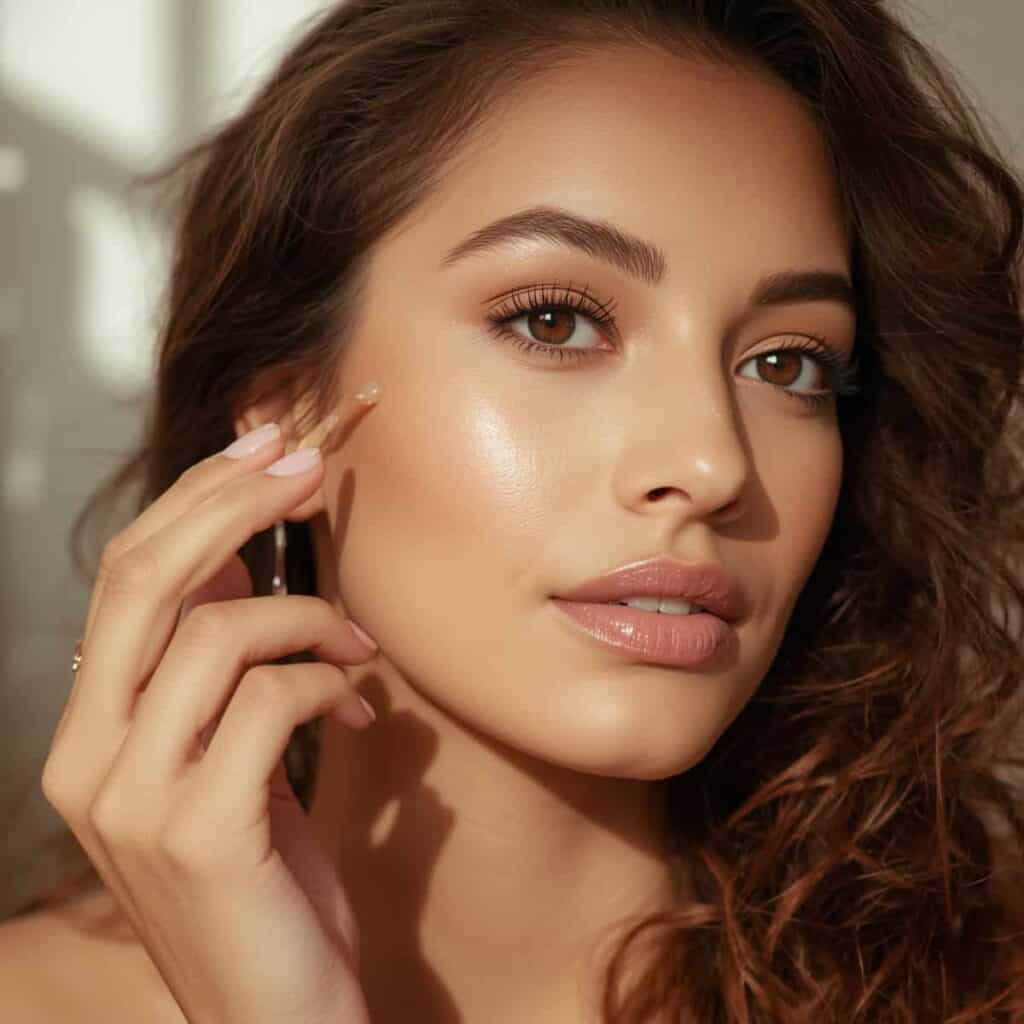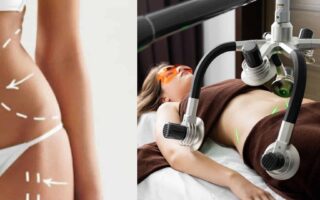
The Complete Guide to Anti-Aging Skincare: Science-Backed Solutions for Timeless Beauty
Aging is inevitable, but premature aging is not. While we can’t stop time, we can significantly influence how our skin ages through informed skincare choices. This comprehensive guide explores the science behind skin aging and provides practical strategies to maintain healthy, youthful-looking skin at any age.
Understanding How Skin Ages
Skin aging results from both intrinsic and extrinsic factors. Intrinsic aging is the natural biological process determined by genetics. As we age, cell turnover slows, collagen production decreases, and skin becomes thinner and less elastic. This process typically becomes noticeable in our thirties and forties.
Extrinsic aging comes from external factors, primarily sun exposure, which accounts for up to 80% of visible facial aging. Other contributors include pollution, smoking, poor nutrition, lack of sleep, and chronic stress. The good news is that extrinsic aging is largely preventable through proper skincare and lifestyle choices.
Common signs of aging include fine lines and wrinkles, loss of elasticity and firmness, uneven skin tone and age spots, dullness and rough texture, enlarged pores, and dryness. Understanding these changes helps you target them effectively with appropriate treatments.
The Foundation: Prevention
The most effective anti-aging strategy is prevention. Start early, ideally in your twenties, but it’s never too late to begin protecting your skin. Sun protection is paramount. Wear broad-spectrum SPF 30 or higher every single day, reapplying every two hours when outdoors. UV damage is cumulative and irreversible, making consistent sun protection the single most important anti-aging measure.
Beyond sunscreen, adopt lifestyle habits that support skin health. Don’t smoke, as it accelerates aging dramatically. Maintain a balanced diet rich in antioxidants from colorful fruits and vegetables. Stay hydrated, get quality sleep, manage stress, and limit alcohol consumption. These fundamentals create the optimal environment for healthy skin aging.
The Gold Standard Ingredients
Certain ingredients have proven track records for addressing signs of aging. Retinoids, including prescription tretinoin and over-the-counter retinol, are the most researched and effective anti-aging ingredients. They increase cell turnover, boost collagen production, fade hyperpigmentation, and improve skin texture. Start with a low concentration and gradually increase frequency to build tolerance.
Vitamin C is a powerful antioxidant that protects against free radical damage, brightens skin, and supports collagen synthesis. Look for stabilized forms like L-ascorbic acid, tetrahexyldecyl ascorbate, or sodium ascorbyl phosphate. Use vitamin C in the morning under sunscreen for maximum protective benefits.
Peptides are chains of amino acids that signal skin to produce more collagen and elastin. Different peptides target different concerns, from wrinkles to firmness to barrier repair. They’re generally well-tolerated and work synergistically with other anti-aging ingredients.
Alpha hydroxy acids like glycolic and lactic acid exfoliate surface cells, improving texture and tone while enhancing product penetration. Beta hydroxy acid, specifically salicylic acid, penetrates pores to clear congestion and smooth texture. Use these acids two to three times weekly, depending on your skin’s tolerance.
Niacinamide strengthens the skin barrier, reduces inflammation, minimizes pores, and addresses hyperpigmentation. It’s suitable for all skin types and plays well with other ingredients. Hyaluronic acid holds up to 1000 times its weight in water, providing intense hydration that plumps fine lines and maintains skin suppleness.
Building Your Anti-Aging Routine
An effective anti-aging routine doesn’t need to be complicated. Morning routine should start with a gentle cleanser, followed by vitamin C serum for antioxidant protection. Apply eye cream to address fine lines and dark circles, then moisturizer appropriate for your skin type, and finally broad-spectrum SPF 30 or higher.
Evening routine begins with thorough cleansing to remove makeup, sunscreen, and daily buildup. Follow with a hydrating toner or essence, then apply retinoid or treatment serum. Use eye cream, and finish with a nourishing night moisturizer or facial oil.
Start slowly when introducing active ingredients. Begin with retinoids two to three nights per week, gradually increasing frequency as your skin builds tolerance. Don’t use multiple active ingredients simultaneously until you know how your skin responds to each individually.

The Retinoid Journey
Retinoids deserve special attention as the most proven anti-aging ingredient. Different forms have varying strengths, from over-the-counter retinol to prescription-strength tretinoin. Retinyl palmitate is the gentlest option for beginners or sensitive skin. Retinol is effective and widely available over-the-counter. Retinaldehyde is more potent than retinol with less irritation. Tretinoin and adapalene are prescription-strength options for maximum results.
Start with a pea-sized amount for your entire face, applied to clean, completely dry skin. Use it two to three nights per week initially, gradually increasing to nightly as tolerated. Always use sunscreen the following morning, as retinoids can increase sun sensitivity.
Expect a purging phase where your skin may temporarily break out as cell turnover accelerates. This is normal and should resolve within four to six weeks. Retinoid results take time, typically three to six months for significant improvement, so patience and consistency are essential.
Targeting Specific Concerns
For fine lines and wrinkles, prioritize retinoids, peptides, and adequate hydration. Consider facial massage to improve circulation and product absorption. For loss of firmness, use ingredients that support collagen and elastin production like peptides, vitamin C, and growth factors. Professional treatments like microneedling or radiofrequency can provide additional firming benefits.
Hyperpigmentation and age spots respond well to vitamin C, niacinamide, alpha arbutin, and retinoids. Consistent sun protection prevents new spots from forming. For under-eye concerns, look for caffeine to reduce puffiness, peptides for fine lines, and vitamin K for dark circles. The skin around eyes is delicate, so choose gentler formulations specifically designed for this area.
Dryness and rough texture benefit from hyaluronic acid for hydration, ceramides to repair the barrier, and gentle exfoliation with lactic acid or enzymatic exfoliants. Avoid harsh scrubs that can damage aging skin.
Professional Treatments Worth Considering
While a solid home routine is essential, professional treatments can accelerate results. Chemical peels provide deeper exfoliation than at-home products, improving texture, tone, and fine lines. Microneedling stimulates collagen production by creating controlled micro-injuries that trigger the skin’s healing response.
Laser treatments target various concerns from pigmentation to wrinkles to overall texture. Different laser types address different issues, so consultation with a qualified provider is essential. Injectables like Botox prevent and soften wrinkles by relaxing facial muscles, while dermal fillers restore lost volume for a more youthful contour.
These treatments work best in combination with excellent at-home skincare. They’re investments that should be approached thoughtfully with qualified professionals.
The Role of Lifestyle
Skincare products can only do so much. Your lifestyle choices significantly impact how you age. Diet matters more than many realize. Consume plenty of antioxidant-rich foods like berries, leafy greens, and fatty fish. Healthy fats from avocados, nuts, and olive oil support skin barrier function. Minimize sugar and processed foods, which contribute to glycation and inflammation.
Sleep is when your skin repairs and regenerates. Aim for seven to nine hours nightly and consider using a silk pillowcase to reduce friction and prevent sleep lines. Chronic stress elevates cortisol, which breaks down collagen and impairs skin barrier function. Practice stress management through meditation, exercise, or activities you enjoy.
Exercise increases blood flow, delivering oxygen and nutrients to skin cells while carrying away waste products. It also helps manage stress and supports better sleep. Regular facial massage and facial exercises may improve circulation and temporarily firm facial muscles, though research on their long-term effects is limited.
Age-Specific Strategies
Anti-aging strategies should evolve with your skin. In your twenties, focus on prevention with consistent sunscreen use, a basic routine with cleanser and moisturizer, and antioxidant serums like vitamin C. Consider introducing retinol in your late twenties.
Thirties call for maintaining prevention while addressing early signs of aging. Start or continue retinoid use, add targeted treatments for specific concerns, and consider professional treatments like chemical peels. Pay extra attention to eye area.
In your forties, intensify your anti-aging efforts. Use stronger retinoids if tolerated, layer complementary ingredients like peptides and growth factors, and increase frequency of professional treatments. Focus on firmness and deeper wrinkles.
Fifties and beyond require addressing hormonal changes that affect skin. Prioritize hydration and barrier repair with richer textures and emollient ingredients. Continue retinoids if tolerated, and consider hormone-balancing skincare. Professional treatments can maintain results.
Common Mistakes to Avoid
Avoid these pitfalls that can undermine your anti-aging efforts. Using too many actives too soon leads to irritation and damaged barriers. Build up gradually and listen to your skin. Skipping sunscreen negates all other anti-aging efforts, as UV damage is the primary cause of premature aging.
Inconsistency yields no results, as anti-aging skincare requires patience and regular use. Not adjusting your routine means failing to recognize that your skin’s needs change with seasons, age, and circumstances. Neglecting your neck and hands reveals your age just as readily as your face, so extend your routine to these areas.
Embracing the Process
Anti-aging skincare is a long-term investment in your skin’s health. Results come gradually, so approach it with patience rather than expecting overnight transformations. Focus on healthy, resilient skin rather than erasing every line. Some lines and changes are natural and even beautiful.
The goal isn’t to look twenty forever, but to look like the best, healthiest version of yourself at every age. Good skin at any age reflects self-care, health, and the confidence that comes from feeling comfortable in your skin.
The Bottom Line
Effective anti-aging skincare combines prevention, targeted treatments, and healthy lifestyle choices. Start with the basics of sunscreen and retinoids, add ingredients that address your specific concerns, and be patient with the process. Remember that skincare is personal. What works for others may not work for you, and that’s fine.
Listen to your skin, adjust as needed, and enjoy the ritual of caring for yourself. The best time to start anti-aging skincare was twenty years ago. The second best time is right now. Begin where you are with what you have, stay consistent, and watch your skin thrive for years to come.
Personal Tip – “Natural Skincare from Within: Drink Kanji Daily”
🌿 This winter, start your own Kanji tradition — small batch, big glow.




